There’s nothing more frustrating than trying to enjoy some peace and quiet, only to be rudely interrupted by the sounds of noise pouring into the room from an adjacent space.
Whether you’re trying to get some much-needed sleep, you’re attempting to get some work done in your home office, or you just want to drown out the sounds of your loud next door neighbors, you may be wondering if there’s a way that you can soundproof your walls.
The ideal situation would be to remove the drywall that your existing walls are made of and add some soundproofing materials to block out that unwanted noise; however, demolition may not be possible. There is a variety of reasons why you may not be able to remove the drywall; for example:
Whatever the reason may be, if you’re looking for a way to soundproof your walls without removing the drywall, there’s good news: there are several non-invasive techniques that can be used to effectively minimize the level of unwanted noise that travels through the walls.
Before you begin trying different soundproofing techniques, first, you need to know a bit about sound. There are two different types of sound: airborne and impact.
Each type of sound transfers differently, and therefore, requires different methods to block the transfer of sound. As such, you need to determine which type of sound you’re dealing with in order to choose the right soundproofing techniques.
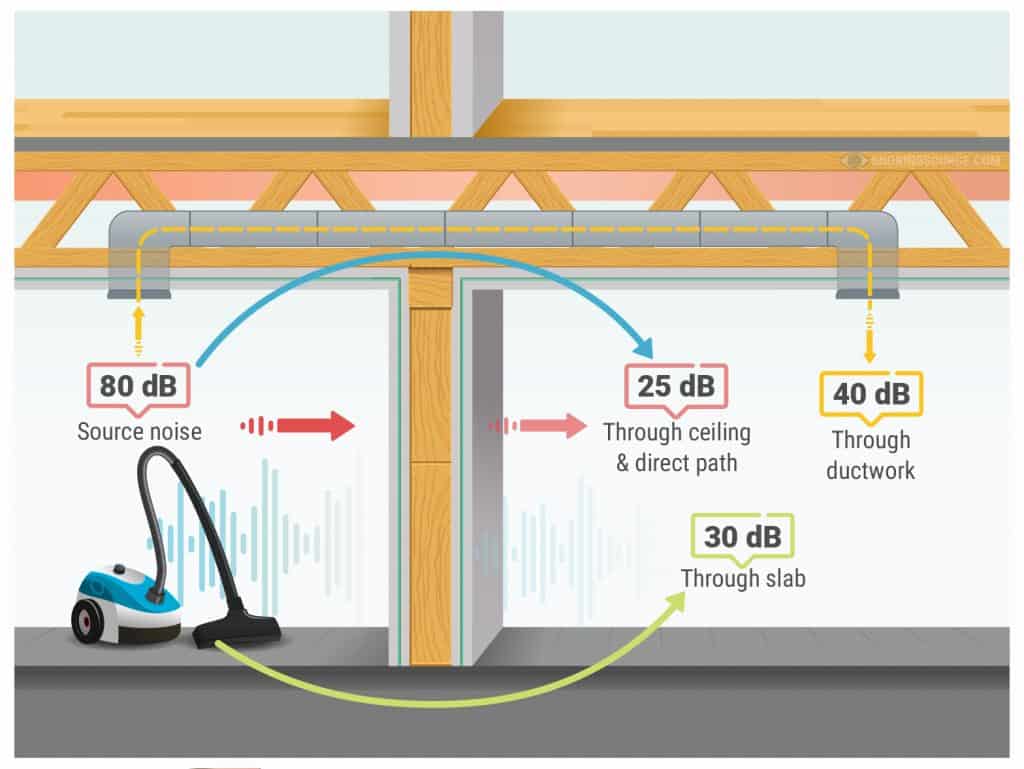
Airborne sound, as the name suggests, refers to sound that is transferred via the air. When something makes a noise, it creates soundwaves. Those waves are picked up in and travel through the air until they collide with a solid object, such as your walls.
The collision creates a vibration and the soundwaves are transmitted into the adjacent room; which is why you can hear people speaking, noise from a TV, or music blaring from the room next to you through your walls.
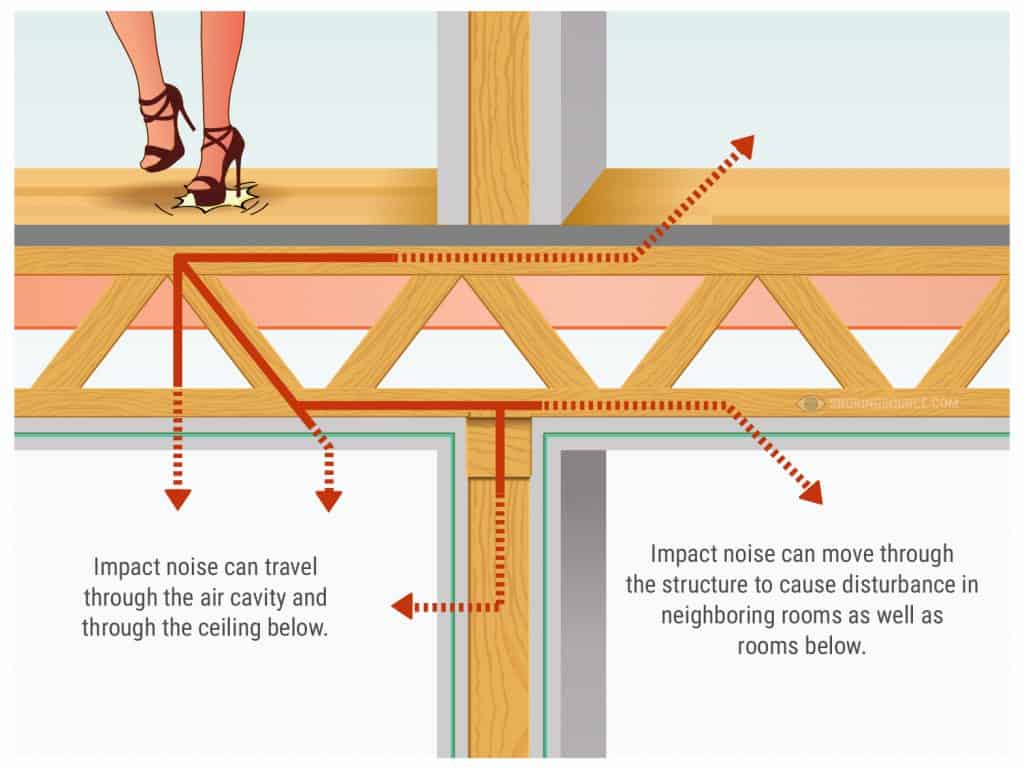
Impact noise occurs when something makes an impact with a structure (hence why it’s also referred to as structure-borne noise). The structure, rather than the air, acts as the medium that the soundwaves are transmitted through; in your case, the walls act as the structure that soundwaves are traveling through.
Examples of impact noise include footfalls transferring through the floor and ceiling above you, knocks on a door, or banging on the walls.
To pinpoint the type of sound that’s traveling through your walls, place your hand on the location where you hear the noise coming from. If you feel a vibration, the sound is impact or structure-based. If you don’t feel a vibration but still hear noise, the source is airborne sound.
There are several relatively easy and cost-effective ways that you can soundproof your existing walls. Below, we offer some proven techniques that can help to reduce both airborne and impact noise.
The methods you use depend on the type of sound you are trying to eliminate. Keep in mind that you may have to use a few different techniques in order to achieve the results that you're after.
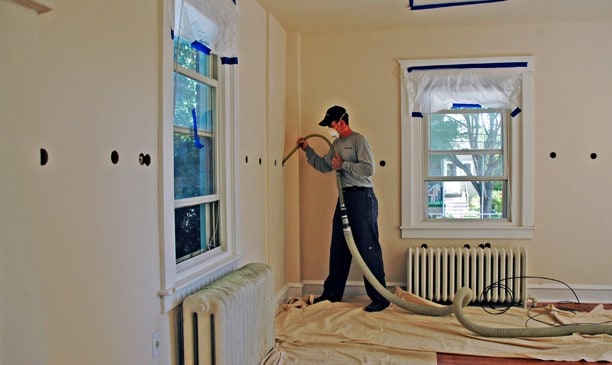
Blown insulation is an effective way to soundproof a wall without removing drywall. This type of insulation is loose in nature and is comprised of low-density cellulose material that can effectively minimize the transfer of soundwaves. The material traps pockets of air, which in turn traps soundwaves, thereby reducing the echoes that airborne noise creates.
If you want to soundproof your walls without removing the drywall, blown insulation is an ideal medium, as it can be easily installed in existing walls.
Do note, however, that you must be able to access the spaces between the walls in order to install blown installation; typically, this can be done through an attic or a crawlspace.
In addition to great soundproofing capabilities, blown cellulose insulation prevents heat transfer, so it improves energy efficiency and will improve the comfort of the space. It’s also affordable, and because it’s comprised primarily of recycled materials.
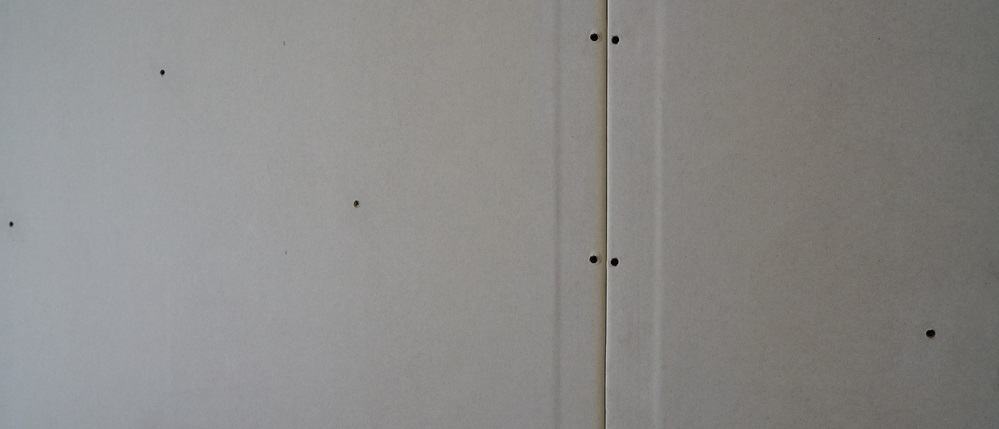
You may not want to or be able to remove drywall, but you might be able to add more drywall to improve sound absorption through the walls.
By adding an additional layer of drywall on the existing drywall, you’ll increase the mass of the walls. Mass is important for soundproofing, as noise is transmitted via vibrations.
Once a soundwave collides with a surface – your wall – the collision must result in movement in the wall in order for the sound to transfer through it. Therefore, it stands to reason that it’s harder for sound to transfer through thicker walls.
For this method, choose a sound deadening drywall. Before securing the new drywall over the existing drywall, apply a layer of Green Glue, a noiseproofing compound, on top of the wall. Then, position the new drywall over the existing wall and use screws to attach it to the studs and secure it in place.
Once the new drywall is up, use acoustic caulk to seal up any gaps along the edges of the panels.
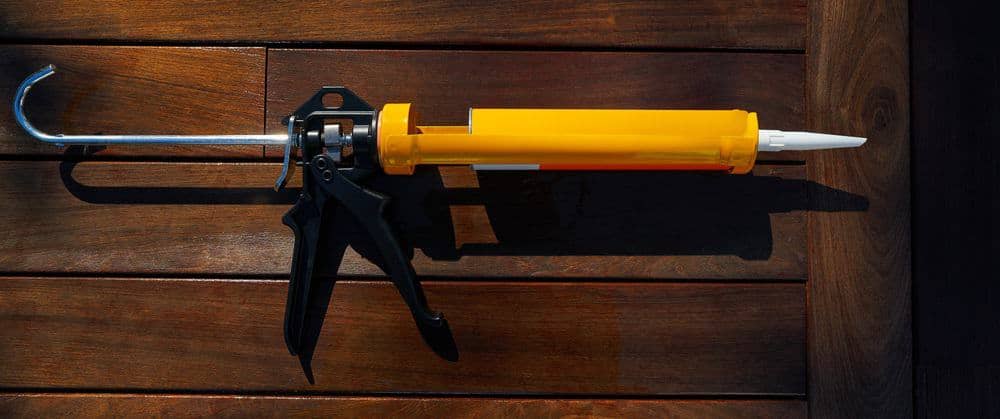
Soundwaves travel through all possible entry points, such as the gaps in your walls. The gaps don’t have to be big in order for large amounts of sound transfer. In order to block soundwaves, seal any gaps in your walls.
Use acoustic caulk to seal up gaps around the windows, cracks, or holes in the walls. Seal up the open space around the outlets and switches by installing a simple wall plate insulation gasket, foam that is specifically designed to fit around switches and outlets.
Once the gaps are sealed, your walls will be more air-tight, which will make it more difficult for soundwaves to travel through the walls; therefore, your noise problem should be significantly reduced.
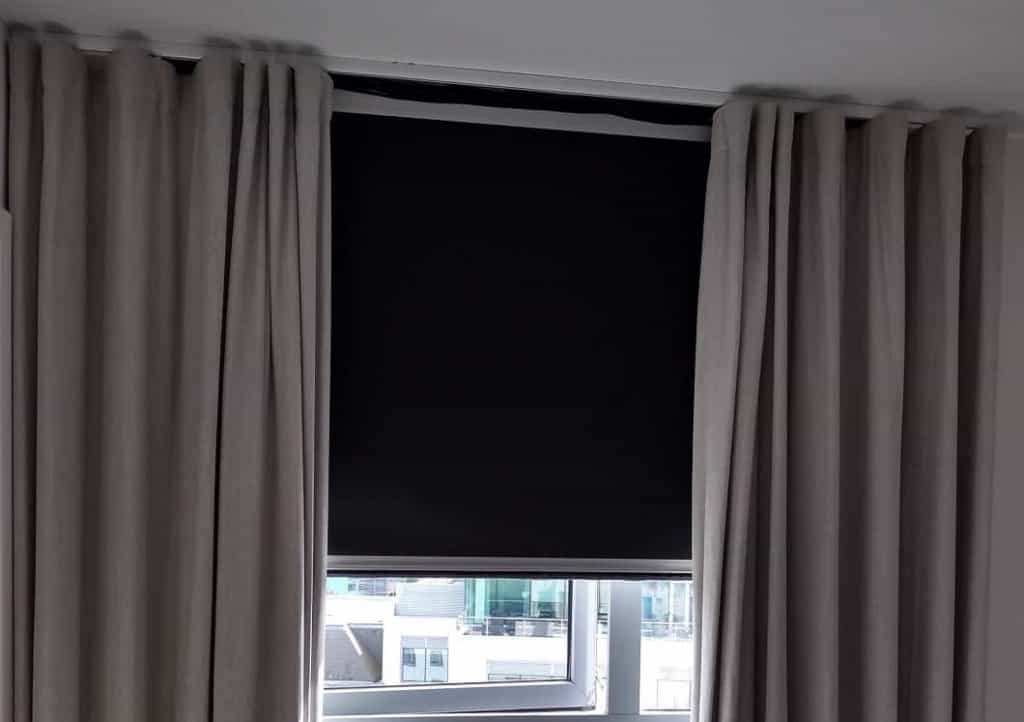
Another way that you can soundproof your existing walls without removing drywall is to suspend soundproof fabric over them. There are two options for this method:
The first option, soundproof curtains, will help to eliminate some degree of obtrusive noise, as these curtains are made of dense fabrics and can absorb soundwaves, thus preventing the passage of noise.
Soundproof curtains are available in a variety of sizes, colors, and patterns, so they’re a better option from an aesthetic point-of-view; however, they won’t provide as much soundproofing as the second option: sound deadening blankets.
Sound deadening or soundproof blankets are comprised of glass fibers, which are bonded with thermoset resin. They have great tensile strength and serve as an excellent source of both sound and thermal insulation.
If you’re trying to eliminate impact and airborne noises, sound deadening blankets are the better option. It should be mentioned, however, that while they are effective for soundproofing, these blankets do little for aesthetic appeal; they’re generally bland in color and have a coarse appearance.
Whichever option you choose, in order to hang fabric from your walls, you can secure curtain rods near the ceiling and drape the fabric from them. Alternatively, you can use nails or screws to attach them to the walls.
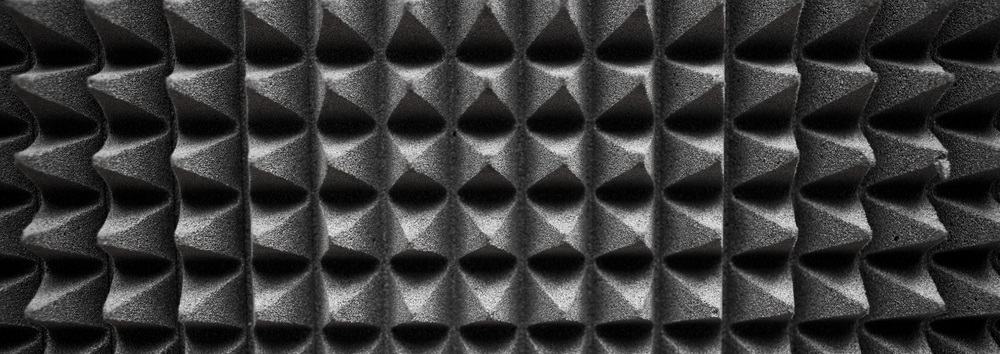
Acoustic foam panels absorb sound waves, meaning that they lessen the degree of sound that travels through your walls. At the same time, they also enhance the sound in the room where they are installed. Not only do acoustic foam panels absorb sound waves, they also dissipate those waves into heat, so they act as a thermal insulator, as well.
Acoustic foam panels are available in an assortment of shapes, forms, sizes, and even colors. To apply foam panels to the walls, you can either tack them in place with nails; or, for more powerful soundproofing, secure them to the walls by applying Green Glue to the back of the panels.
To improve the visual appeal of the panels, try hanging them in different positions; for example, you can place the panels in an alternating vertical/horizontal pattern.
The more space soundwaves have to move around, the more they will jump around; the more they jump around, the more energy they will expend. As a result, those noises that are coming through your walls appear to be louder than they actually are.
To limit the amount of space soundwaves have to move, get creative with your furnishings. Position tall bookcases, armoires, and dressers along the walls; hang paintings and tapestries on the walls; place plants and any other decorative elements on the walls. Doing so will help to block soundwaves and prevent them from bouncing throughout the room.
There are several effective ways to soundproof your walls that don't have you removing the drywall. The methods that will work best depend on the type of noise you are trying to eliminate, your budge, and even your style; however, for the most success, we recommend employing a combination of these soundproofing techniques.

Snoringsource.com is a participant in the Amazon Services LLC Associates Program, an affiliate advertising program designed to provide a means for website owners to earn advertising fees by advertising and linking to amazon(.com, .co.uk, .ca etc) and any other website that may be affiliated with Amazon Service LLC Associates Program.